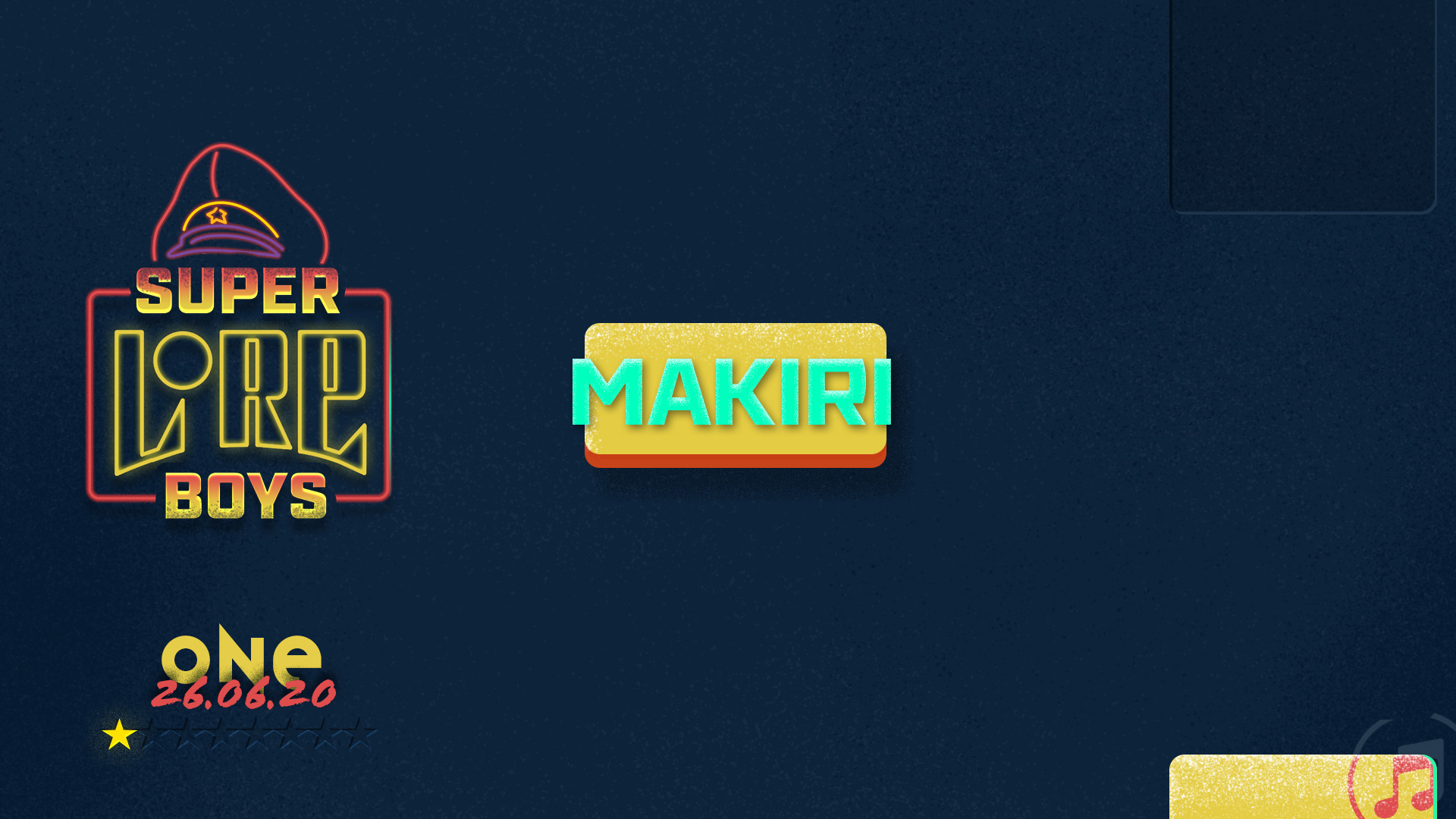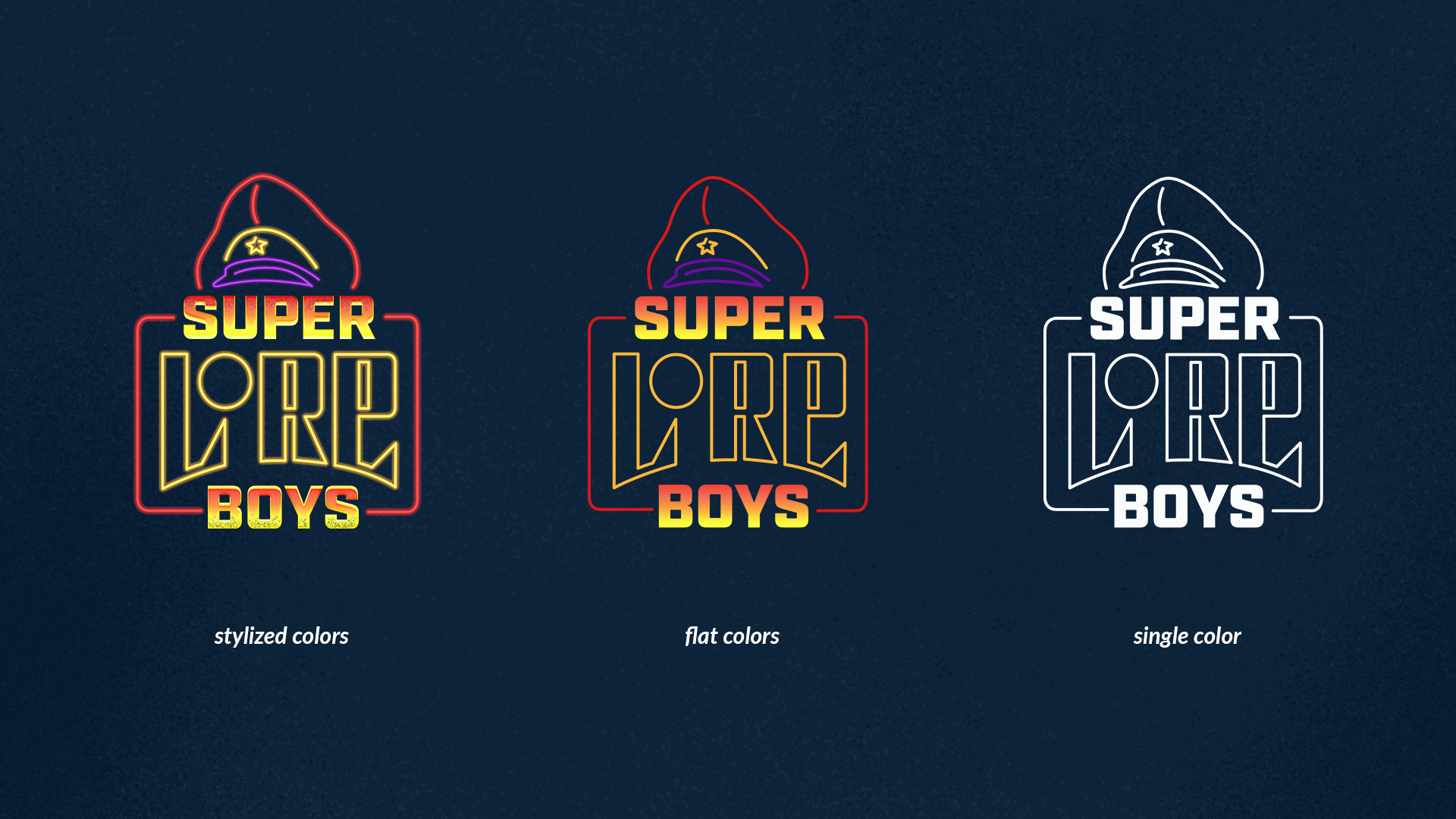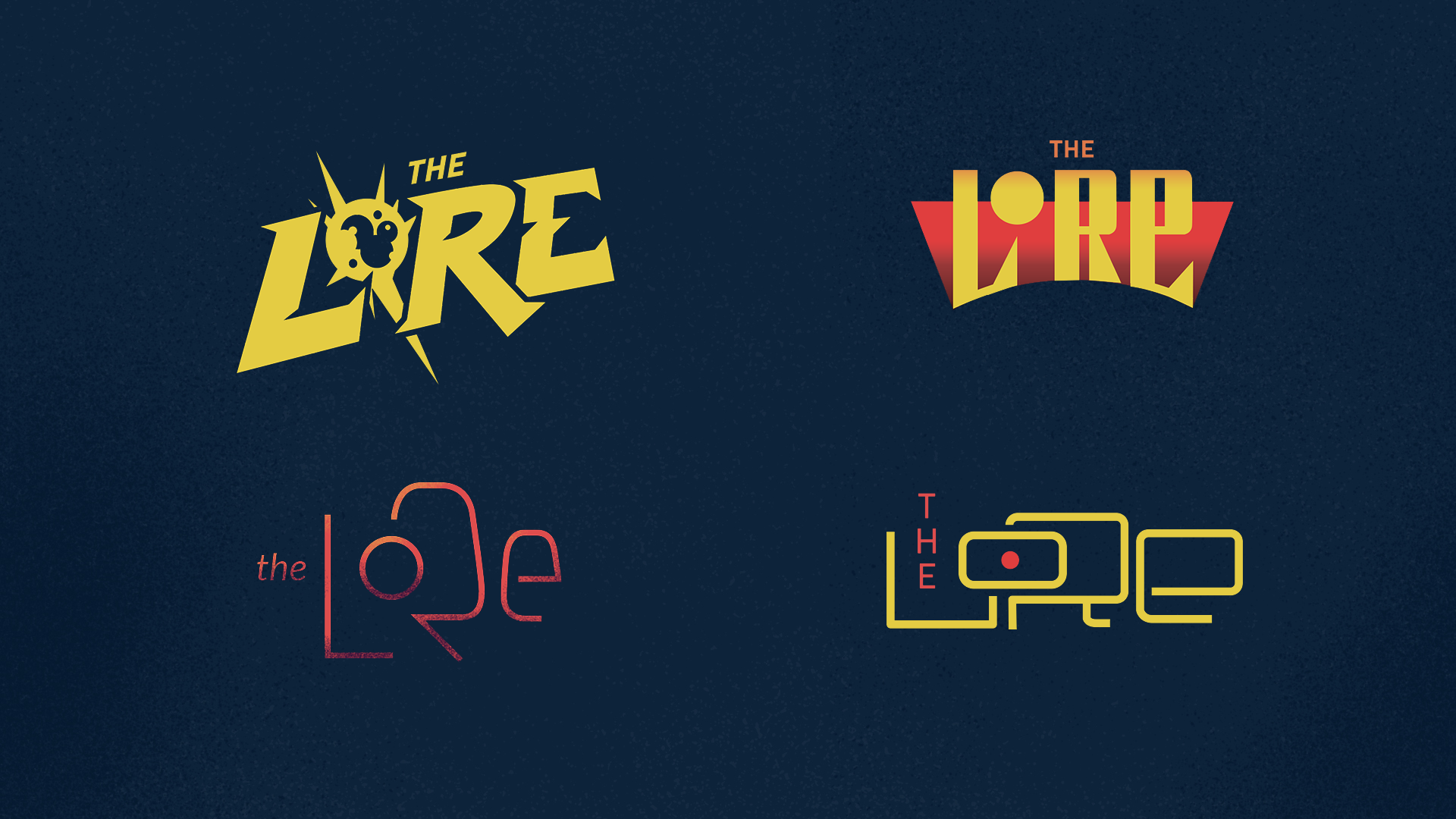Super Lore Boys Season one
Riz0ne | Super Lore Boys | Brand Designer, Production Coordinator & Video Editor | 2020
One of Riz0ne's main goals when he got into streaming was to share the stories of the Retro Fighting Game Community. Originally conceived as a book, Super Lore Boys was a compromise born from the pandemic. Limited from traveling the world to interview notable people from the FGC, Riz would speak with them over a two-hour call instead, crafting a one-of-a-kind podcast for the community.
As the proper project collaboration with Riz, I designed the brand identity and full graphics package while helping Riz coordinate the project with his international guests. We launched the podcast in 2020, first on Twitch, then on Youtube and now on Spotify.
Intro Sequence & Guest Card Animation
One of the most important elements for any show is a memorable intro sequence. Riz found himself saying "okay, so let me tell you about the lore" on his streams quite often, so we figured, why not use that line as the show's intro. After pitching the storyboard (see below) to him, we settled on a fully kinetic typographic treatment. To tie it back to the game, we used the original sounds of Street Fighter II off the CPS-1 arcade board for the intro and outro sequences, harkening back to the history of the game and the community.









Final Mock-Ups Arranged as a Storyboard for the Intro Sequence



Final Logo, Original Logo Concepts & Riz0ne Neon Version
Originally the podcast was going to be called The Lore and it wasn't until after designing a few logo options that we decided to check out the logos of other podcasts -- which is when we unfortunately realized that "The Lore" was such a common title for a podcast. So Riz opted to change the name to "Super Lore Boys" since "Boys" was another of his favorite terms to use on stream and "Super" from the topic at hand, "Super Street Fighter II Turbo". After the SLB logo was designed, I opted to style Riz0ne's logo in a similar neon look, which would be animated for each episode's intro sequence.
Video Pop-ups (Left) & Image Slideshows (Right)
Part of what makes the podcast feel like more than an interview is the inclusion of archival video footage, image slideshows (usually provided by the guests) and custom images made specifically for a guest -- sometimes specifically to land a dumb joke, which is really why I take on any project.


Final Layout (Left) & Original Test (Right)
Since the beginning, we knew we wanted a way for our podcast to stand out from others visually, so we opted for an audio visualizer. Visualizers are simple to implement in post-production, but in a live environment, we needed something lightweight and flexible. We landed on using Joakim Dahl's software Plane9. In addition to the visualizer, on the right side of the podcast, we have the live Twitch chat and low-fi beats from Marcus D playing throughout. All these elements add a nice dynamic quality to the broadcast where it would otherwise feel empty.
End Credit Sequence - Original (Left) vs Update (Right)
The end credits were changed from the first episode. The original vertical scroll didn't signify enough of a visual change to indicate to viewers that the episode had ended. The horizontal scroll was also easier to template than the vertical, as it could accommodate longer names and urls better than the vertical option.
Social Media Teaser Videos
Each episode had a looping teaser video that we would post on social media ahead of the air date to promote the live stream. The file size of these videos was very important, as keeping them under 8mb meant that fans could share the video file directly to each other on Discord.





Channel Banner

Video End Slate
YouTube Channel Branded Assets
A new podcast required a new YouTube channel and with it, branded assets, like a channel avatar, a channel banner, episode thumbnails and the video end slate. The first season featured the main characters of each guests in their custom colors. This would eventually change to the photos of each guest, along with the "Super Street Fighter II Turbo Podcast" text being updated as well.






Spotify Playlist Episode Thumbnails